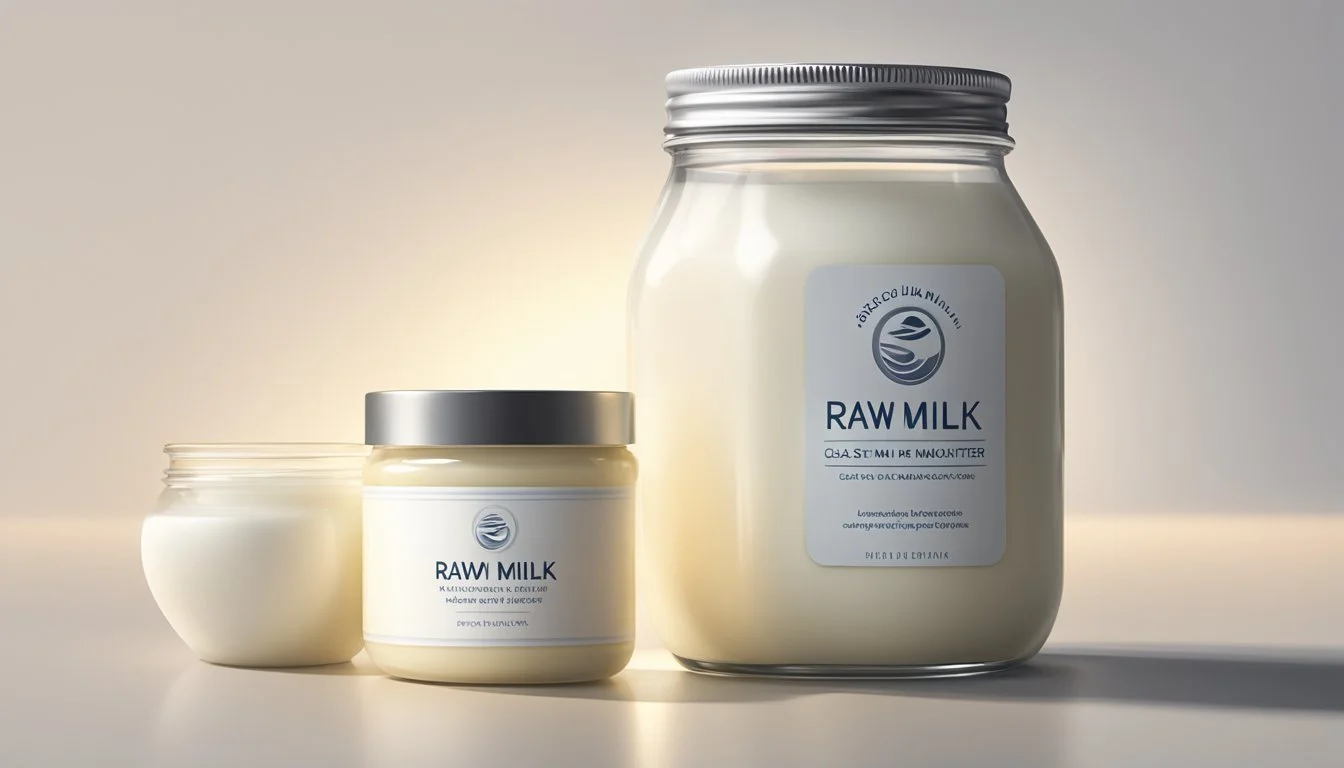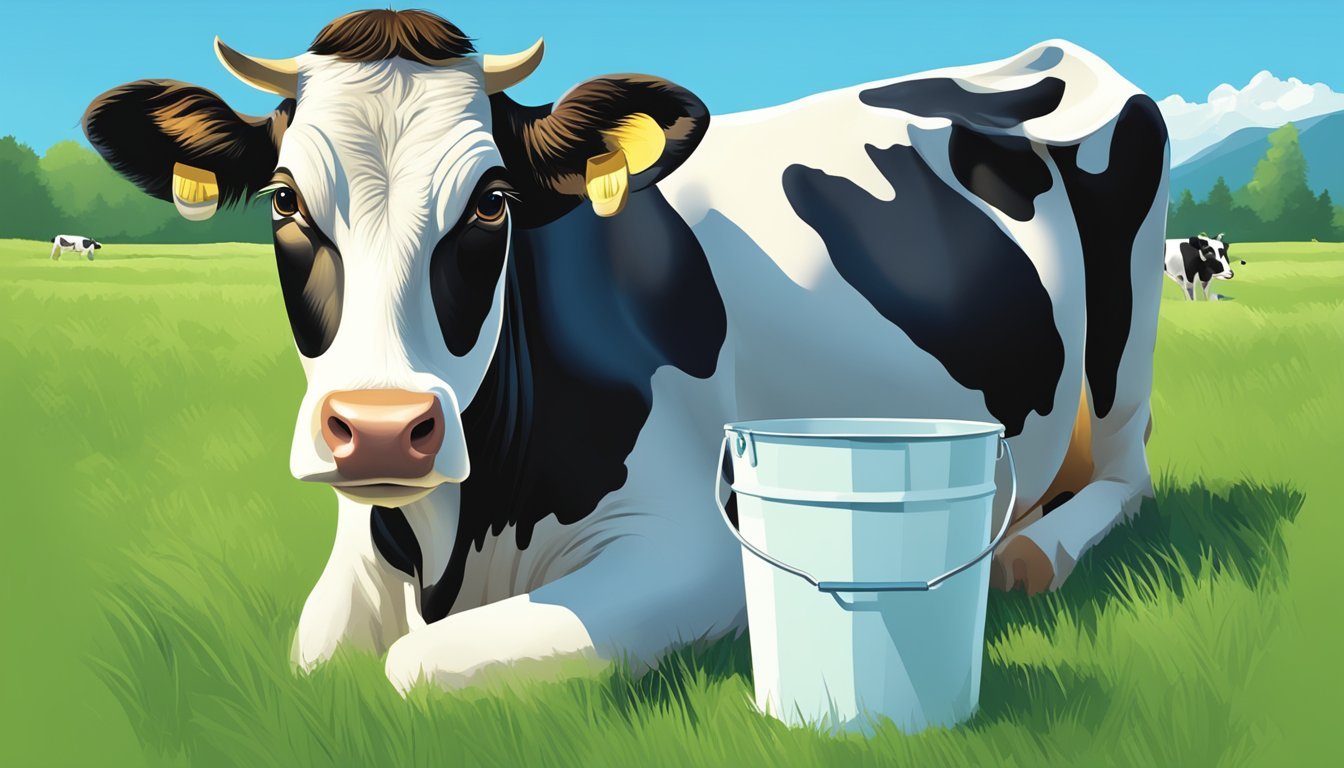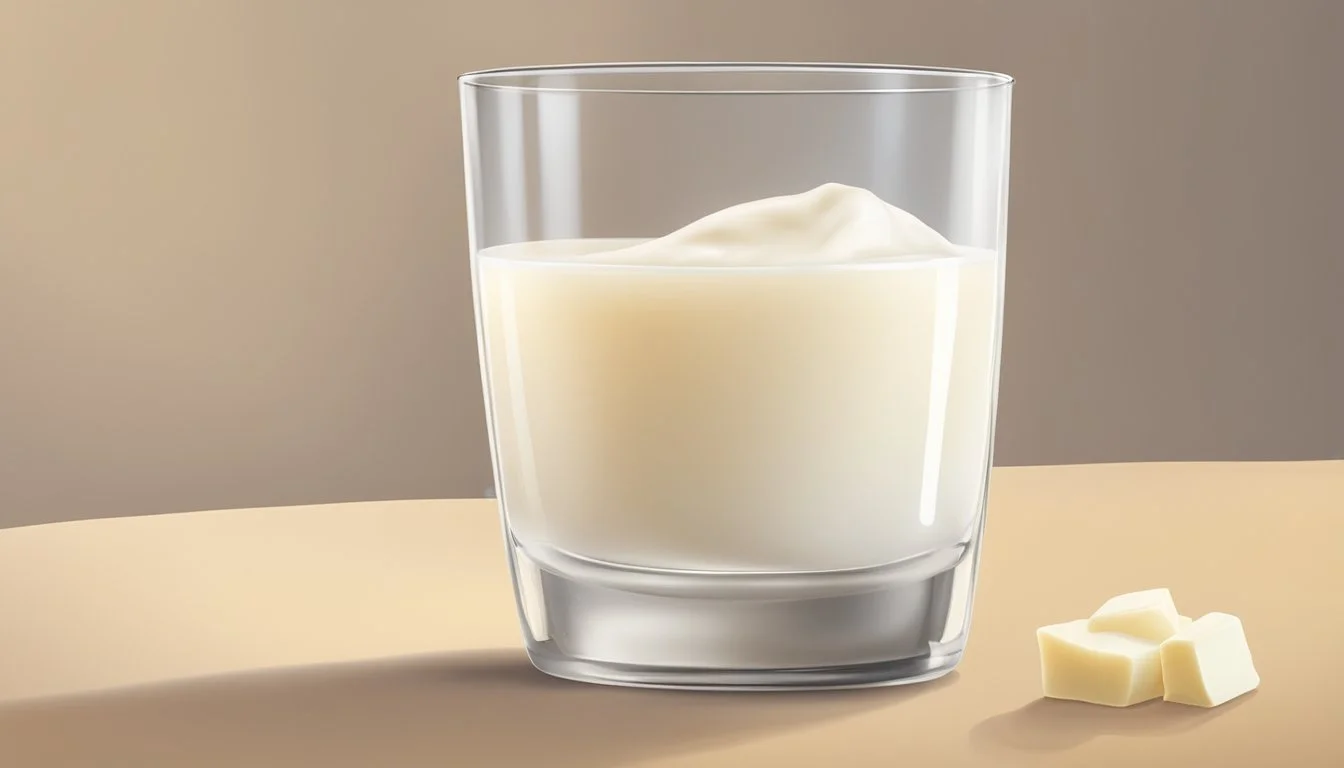The Impact of Raw Milk on Skin Health
Sorting Fact from Fiction
Milk has been a staple in human diets for centuries, providing a rich source of nutrients. In recent years, the trend of consuming raw milk, as opposed to pasteurized milk, has gained a following among those who advocate for natural food sources. Proponents of raw milk consumption claim it delivers a host of skin health benefits, ranging from improved hydration to the alleviation of certain skin conditions. This perspective maintains that the natural enzymes and proteins in raw milk, which may be denatured by the pasteurization process, are crucial for maintaining skin health when consumed or applied topically as a part of skincare routines.
Despite these purported benefits, numerous health regulatory bodies and medical professionals express concerns due to the potential risks associated with raw milk. Unlike pasteurized milk, raw milk can harbor pathogenic microorganisms, such as non-pathogenic Listeria species, which pose significant health risks. These pathogens can be present even in milk from healthy animals, as farms can serve as reservoirs for foodborne pathogens. Consumers are therefore advised to carefully weigh the claimed dermatological benefits against the scientifically documented health risks.
As the debate between anecdotal testimonies and scientific evidence continues, it becomes increasingly important for consumers to make informed decisions based on reliable research. While some studies suggest that milk proteins may benefit skin health when included in dietary regimens or cosmetic formulations, the ambiguity surrounding the safety and nutritional superiority of raw milk warrants a meticulous assessment of the existing literature and scientific studies.
Raw milk has been increasingly recognized for its positive impact on skin health, with many attributing its benefits to the unique raw milk chemistry and its ability to impart a creamy texture to skincare products. As the interest in natural and unprocessed ingredients continues to grow, the raw milk delivery revival has made this valuable resource more accessible to consumers, despite the challenges posed by the raw milk legal landscape.
In addition to its nourishing properties, some proponents of raw milk suggest that it may play a role in reducing allergies, making it a compelling option for those with sensitive skin. To gain further insight into the benefits of raw milk for skin health, a raw milk farmer interview can provide valuable perspectives on the production and potential skincare applications of this natural ingredient.
The impact of raw milk on skin health extends beyond its surface-level effects, as its use in skincare products reflects a broader shift towards embracing natural, farm-fresh ingredients. With its potential to contribute to a healthy skincare regimen, raw milk continues to garner attention for its ability to promote skin health in a gentle and nurturing manner.
Historical Context of Milk Consumption
Milk has been a staple in diets for thousands of years, evolving significantly in terms of safety and processing methods. These changes have directly impacted public health and consumer habits.
Evolution from Farm Milk to Pasteurization
Historically, milk was consumed directly from the source, typically a dairy farm. This raw milk had no treatment to remove pathogens, which made it a natural but potentially risky food. With the advent of pasteurization in the 19th century, a process named after scientist Louis Pasteur, milk could be heated to a specific temperature for a set period to eliminate most bacteria. This method revolutionized milk consumption by extending shelf life and reducing the risk of disease.
Ultra-High Temperature (UHT) processing later emerged, treating milk at even higher temperatures, thus extending shelf life further. This allowed milk to be stored without refrigeration and made it accessible to a wider market.
Regulations and Safety Measures
The regulation of milk consumption to ensure public health has a marked history, with key organizations like the Food and Drug Administration (FDA) and the Centers for Disease Control and Prevention (CDC) at the forefront. They enforce guidelines on the sale of raw milk, which include prohibiting its sale across state lines and advocating for pasteurized milk as the healthier option due to its reduced risk of pathogens.
Organization Role in Milk Safety FDA Regulates the interstate sale of milk. CDC Provides data and guidance on milk-related health risks.
Their efforts have significantly decreased milk-borne illnesses. However, some states still allow the sale of raw milk under specific conditions, which continues to be a debated topic due to the potential health risks and purported benefits.
Nutritional Profile of Raw Milk
The nutritional profile of raw milk is diverse, containing essential fatty acids, fat-soluble vitamins, high-quality protein, lactose, and various enzymes that contribute to its overall nutritional content.
Fatty Acids and Fat-Soluble Vitamins
Raw milk is a rich source of fatty acids, including both saturated and unsaturated fats. It provides a range of fat-soluble vitamins which are integral for maintaining good health:
Vitamin A: Essential for skin health, immune function, and vision.
Vitamin D: Important for bone health and immune function.
Vitamin E: Acts as an antioxidant, protecting cells from damage.
Vitamin K: Necessary for blood clotting and bone metabolism.
These vitamins are carried in the milk fat, making their content higher in full-fat raw milk.
Protein Content and Quality
Raw milk contains approximately 3.2% protein, predominantly made up of:
Casein: Approximately 82% of the total protein content.
Whey Proteins: Comprise about 18% of the total protein content.
These proteins are not only vital for growth and repair but also contain all nine essential amino acids, making raw milk an excellent source of high-quality protein.
Lactose and Enzymes
Raw milk naturally contains lactose, a form of sugar, which provides about 30% of the total calorie content of milk.
The presence of lactase-producing bacteria in raw milk may aid in the digestion of lactose. Additionally, raw milk contains various enzymes that are believed to contribute to its digestibility and nutritional absorption.
It's important for consumers to be aware that while raw milk offers these nutrients, it also poses a risk of foodborne illness if not handled properly.
Health Benefits and Therapeutic Claims
The consumption of raw milk carries with it contentions about its potential impact on skin health, with some users reporting improvements in allergies and digestive health. Science has been exploring these claims to see where anecdotal evidence meets measurable results.
Allergies and Atopic Conditions
Raw milk has been associated with a lower incidence of allergies and atopy, including childhood asthma. Studies suggest that exposure to a variety of bacteria present in raw milk might stimulate the immune system, potentially reducing allergic reactions. It's critical to note that while some evidence points towards a link between raw milk and reduced rates of asthma and allergies, these benefits are still under investigation, and the consumption of raw milk poses significant health risks.
Digestive Health and Lactose Intolerance
Consumers of raw milk often claim better digestive health and alleviation of lactose intolerance symptoms. The theory is that raw milk contains certain enzymes that aid in the digestion of lactose. However, lactose content is not reduced in raw milk; what may vary are the levels of enzymes that aid in processing lactose in the digestive tract. These claims remain contested by scientific studies, and potential consumers should be wary of the risks of unpasteurized milk, including bacterial contamination.
Bone Health and Chronic Disease Prevention
Raw milk is a source of nutrients like calcium and other minerals that are important for bone health. Studies have explored the correlation between milk consumption and the prevention of chronic diseases like cardiovascular disease and some forms of cancer. Raw milk enthusiasts also tout the presence of higher levels of beneficial compounds such as folate. However, the risks associated with drinking raw milk often overshadow these potential benefits, as pasteurization does not significantly diminish the nutrient content of milk.
Risks and Public Health Concerns
Despite anecdotal benefits, consuming raw milk carries documented risks associated with pathogen contamination, allergies, and lactose sensitivity that may outweigh potential skin health benefits.
Pathogen Contamination and Foodborne Illness
Raw milk can contain harmful pathogens such as Campylobacter jejuni, Listeria, Salmonella, and E. coli, which are responsible for foodborne illnesses. These infections can lead to severe health issues ranging from gastrointestinal distress to life-threatening conditions. Bovine tuberculosis and brucellosis are also associated with the consumption of raw milk from infected animals.
Allergic Reactions and Lactose Sensitivity
Consumption of raw milk may trigger allergic reactions in individuals with cow's milk allergy, which is different from lactose intolerance. Lactose intolerance results from the body's inability to break down lactose, leading to digestive discomfort. Both conditions can cause adverse effects on individuals after consuming raw milk.
Long-Term Health Outcomes
Risks of long-term health outcomes due to raw milk consumption are a concern. Repeated exposure to milkborne pathogens can lead to chronic conditions or complicate existing health issues. While some argue potential benefits, the evidence strongly supports the risks associated with raw milk, emphasizing the need for pasteurization to ensure safety.
Scientific Evidence and Clinical Studies
To critically assess the impact of raw milk on skin health, one must examine the scientific evidence, including systematic reviews, epidemiological studies, and microbiological research, which illuminate the interplay between raw milk consumption and skin-related outcomes.
Systematic Reviews and Meta-Analyses
Systematic reviews and meta-analyses have served as cornerstones for aggregating and evaluating the effects of raw milk on health. One umbrella review scrutinized 41 meta-analyses related to milk consumption, noting benefits outweighing harms for various health outcomes. Such reviews often apply tools like AMSTAR 2 and GRADE to rate the methodological quality and the certainty of the evidence presented, although it's important to consider limitations, including study design and sample sizes.
Epidemiological Data and Cohort Studies
Epidemiological studies and prospective cohort studies offer insights into the long-term health implications of raw milk consumption. These studies document correlations between raw milk intake and reduced incidence of allergies and asthma, shedding light on possible protective effects. One must regard this evidence as observational, implying an association but not causation.
Advancements in Microbiological Research
The role of microorganisms present in raw milk is under continuous examination. Research delves into how these microbial communities might confer health benefits or pose risks. Clinical studies suggest that exposure to certain microbes in raw milk could potentially enhance the skin's immune responses, possibly influencing conditions like eczema. However, the consumption of raw milk carries a risk of exposure to pathogenic bacteria, necessitating rigorous microbial assessment.
Consumer Perceptions and Market Trends
In the realm of raw milk and its products, consumer attitudes are shaped by an increasing demand for unprocessed foods, varying cultural preferences, and the influence of health claims on purchase decisions. These trends impact market dynamics significantly.
Demand for Natural and Unprocessed Foods
Consumers are gravitating towards natural and unprocessed food options, with raw milk seen as a key component within this niche market. Quality is often associated with minimal processing, leading to a belief in superior nutritional benefits and flavor profiles. This trend reflects a broader, growing interest in understanding the origin and treatment of food products.
Cultural Differences and Preferences
Cultural influences play a pivotal role in the consumption patterns of raw milk. Preferences can vary widely, with some populations having a historical predilection for raw milk, while others show reluctance due to unfamiliarity or prevailing health concerns. These varying cultural preferences further segment the market and define regional consumer behavior.
Impact of Health Claims on Consumer Choices
The perceived health benefits of raw milk often drive consumer choices. Claims regarding its positive effects on skin health, immunity, and general wellbeing act as significant purchase motivators. However, consumers also weigh these perceived benefits against potential safety risks, making informed choices a crucial aspect of market engagement.
Impact of Raw Milk on Skin Health
Raw milk has been a topic of discussion with respect to skin health, particularly concerning its potential benefits for conditions like acne due to its nutritional content.
Case Studies on Acne and Skin Conditions
Several studies have investigated the effects of raw milk on skin conditions such as acne. Milk proteins have been shown to possess biological activities that can impact skin health when ingested or applied topically. Research suggests that these proteins may influence the condition of skin cells, such as fibroblasts and keratinocytes, which are integral to skin repair and health.
The Role of Fatty Acids and Vitamins
The composition of raw milk includes a range of fatty acids and vitamins that are deemed beneficial for skin health. For instance:
Fatty Acids: Omega-3 and Omega-6 in raw milk may contribute to reducing inflammation, a common issue in acne and other skin disorders.
Vitamins: Raw milk is a source of vitamins A, D, and E, all of which are known for their skin-health-promoting properties. Vitamin A, in particular, is often associated with aiding in the treatment of acne due to its role in skin cell turnover.
Anecdotal Evidence and Beliefs
Despite limited scientific studies, anecdotal evidence often drives beliefs about the benefits of raw milk for skin health. Many individuals report improvements in skin texture and a reduction in acne flare-ups after incorporating raw milk into their diets or skincare routines. However, these accounts should be considered with caution, as they do not constitute scientific evidence, and raw milk can also pose potential health risks if not handled properly.
Environmental and Ethical Considerations
When considering the impact of raw milk on skin health, it is essential to evaluate both environmental and ethical dimensions. These considerations shape the farming practices, animal welfare, and public health implications.
Sustainable Farming Practices
Sustainable farming practices play a crucial role in maintaining the health of the farming environment. Producers of raw milk often adopt measures that enhance soil quality and reduce carbon footprint. Direct passage of milk from cow to consumer decreases the need for extensive processing, which in turn may lessen energy use and industrial waste.
Animal Welfare and Ethics
Ethics dictate that animals should be treated humanely, and their welfare must be a priority. Farms providing raw milk typically ensure high welfare standards, including adequate space, proper nutrition, and minimized stress, which can directly influence the protective effects of milk on skin health.
The Hygiene Hypothesis and Immune System
The hygiene hypothesis suggests that exposure to certain microorganisms in early life can result in a stronger immune response. Consuming raw milk may introduce non-pathogenic bacteria that stimulate the immune system, potentially offering protective effects on the skin by reducing allergy and eczema prevalence. It is crucial for the farming environment to balance hygiene and exposure to secure health benefits without compromising safety.
Regulation, Safety, and Legal Issues
The regulation and safety of raw milk are closely monitored to ensure public health, while legal issues dictate the parameters of its sale and distribution. These aspects are governed by a complex interplay of surveillance measures, food safety protocols, and copyright laws.
Surveillance of Raw Milk Sales
Current regulatory frameworks establish stringent surveillance procedures to monitor raw milk sales. The consumption of raw milk carries risks due to potential contamination by foodborne pathogens. Agencies such as the FDA oversee the safety of raw milk, executing regular inspections and enforcing guidelines at production facilities. In many regions, the legality of raw milk sales is strictly controlled, with many states allowing it under precise conditions or prohibiting it entirely.
Food Safety Protocols and Pasteurization
Food safety protocols, including pasteurization, are critical in mitigating the risks associated with raw milk consumption. Pasteurization is a proven method to eliminate harmful bacteria without significantly altering the nutritional content of milk. Strict adherence to these protocols can substantially reduce the incidence of foodborne illnesses. Producers often implement rigorous hygiene and safety measures to minimize risks before distribution.
Copyright and Publishing Laws
Material related to the promotion and distribution of raw milk, including scientific research, is subject to copyright laws. It's essential for entities within this industry to ensure that they are not infringing upon intellectual property rights when disseminating information about raw milk. Additionally, accurate representation of the benefits and risks associated with raw milk consumption is necessary to avoid misleading consumers.








